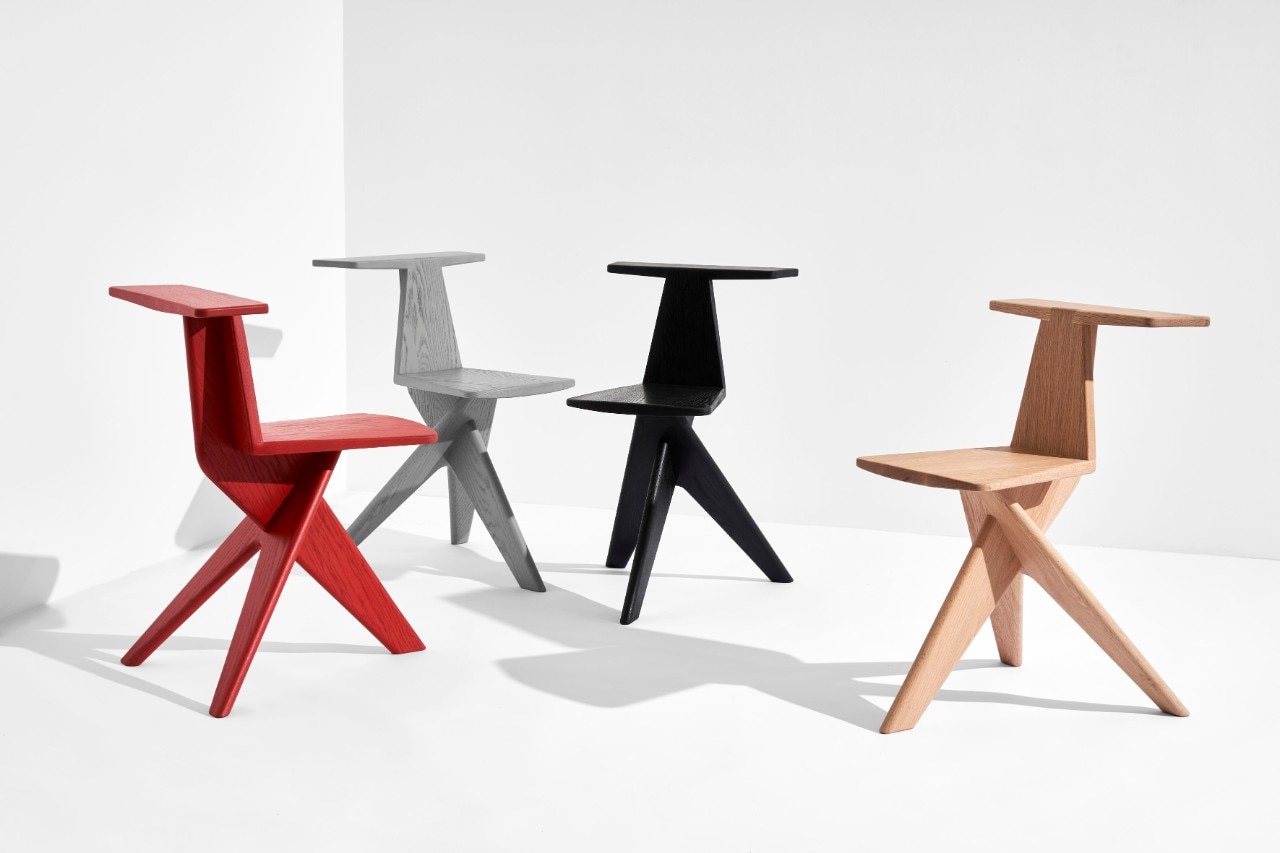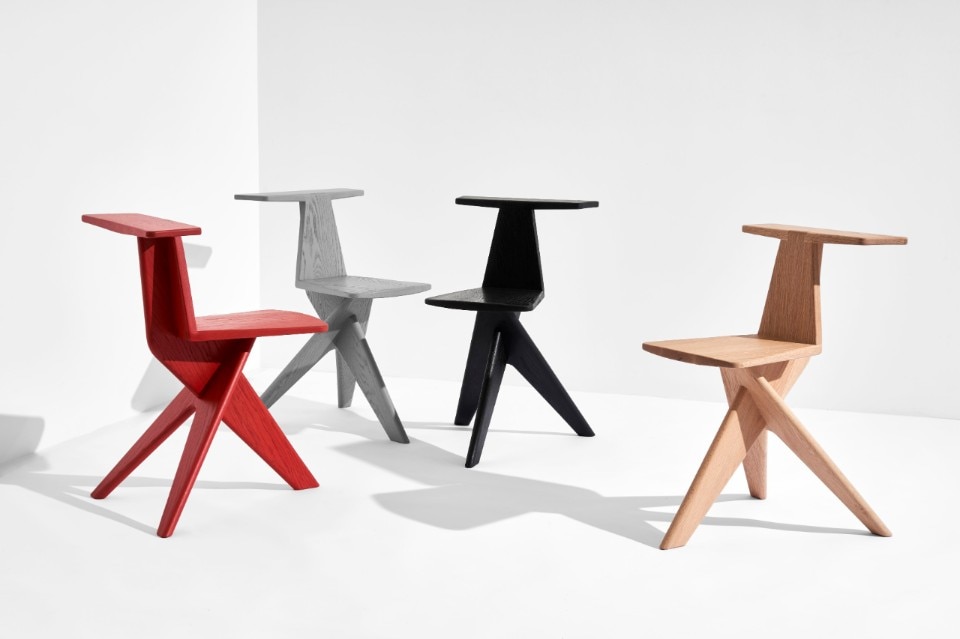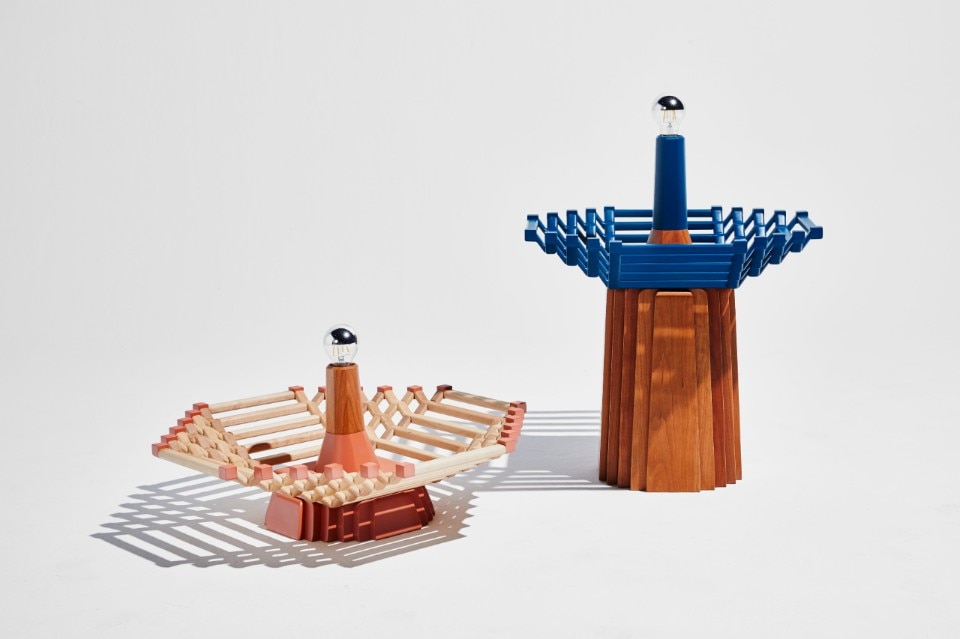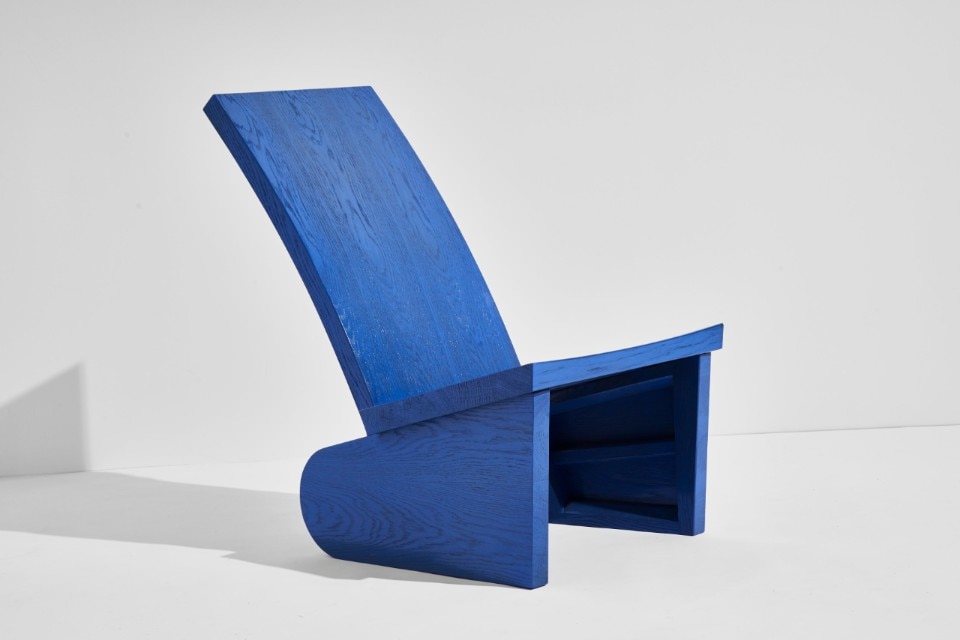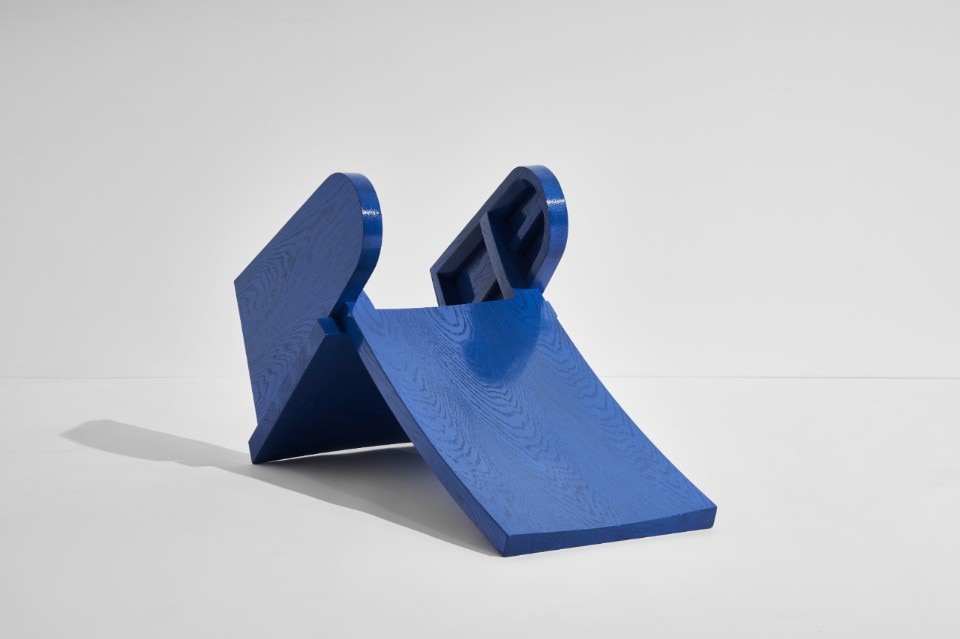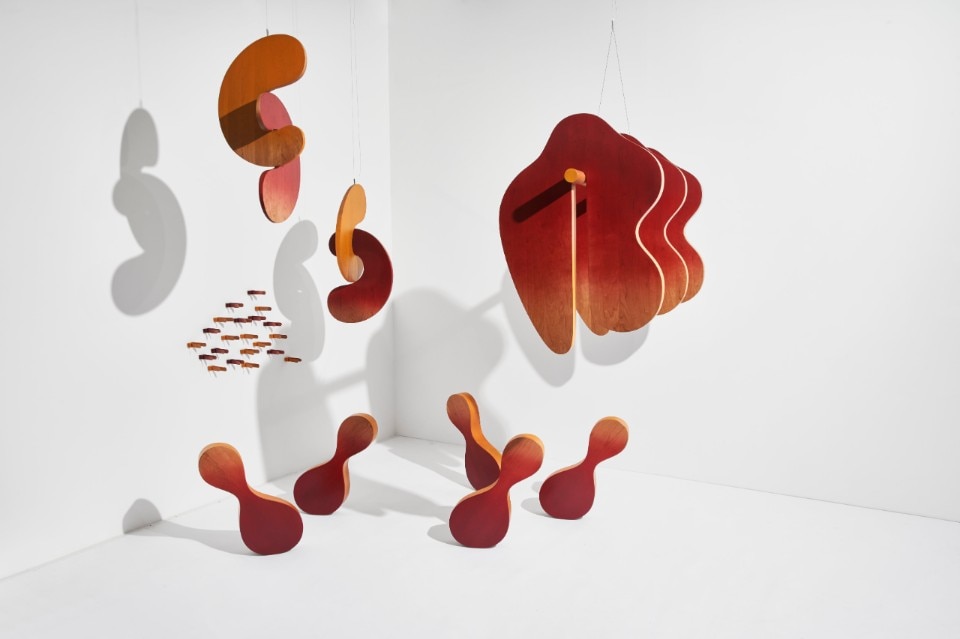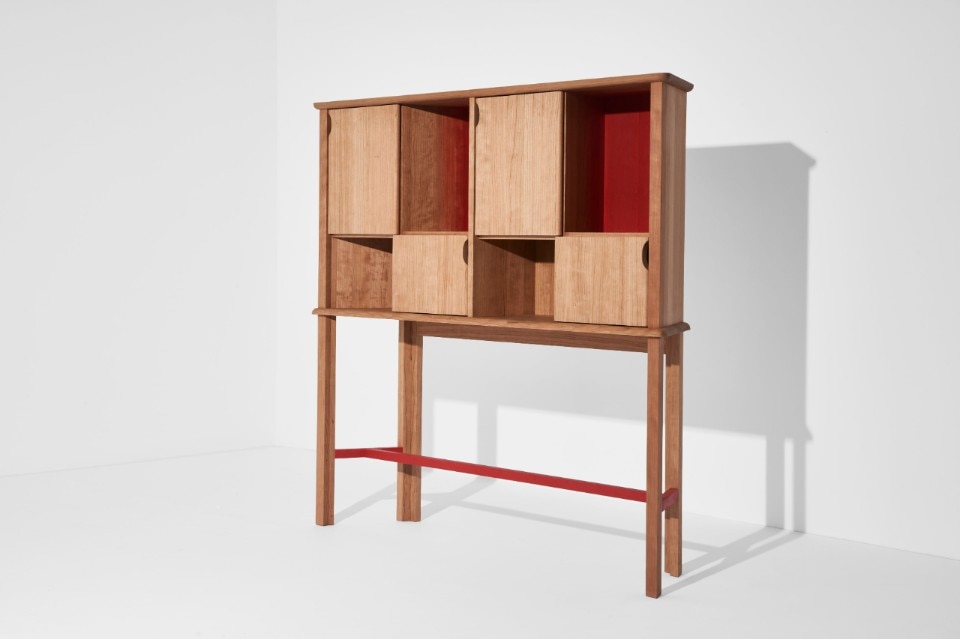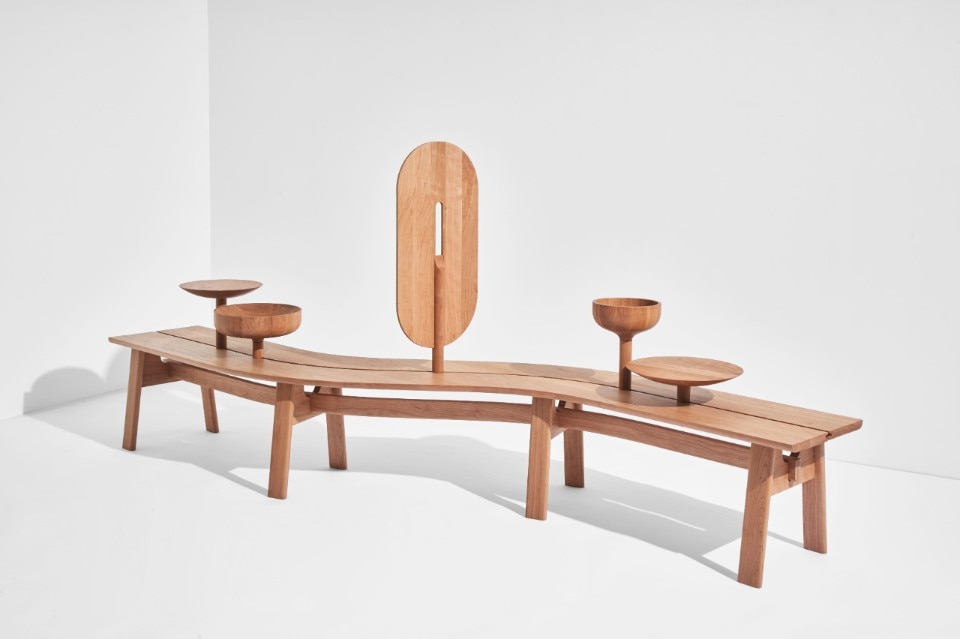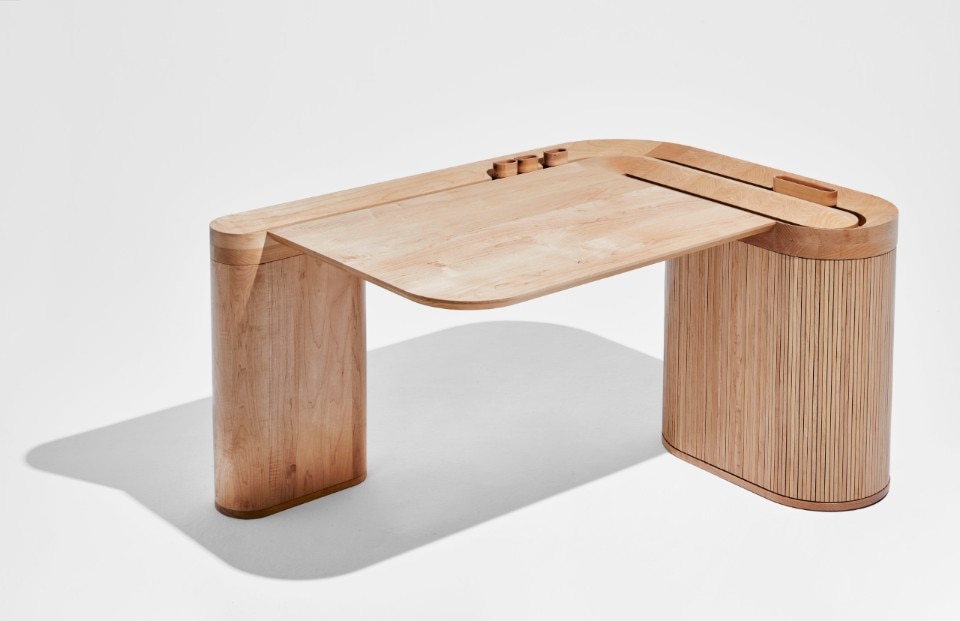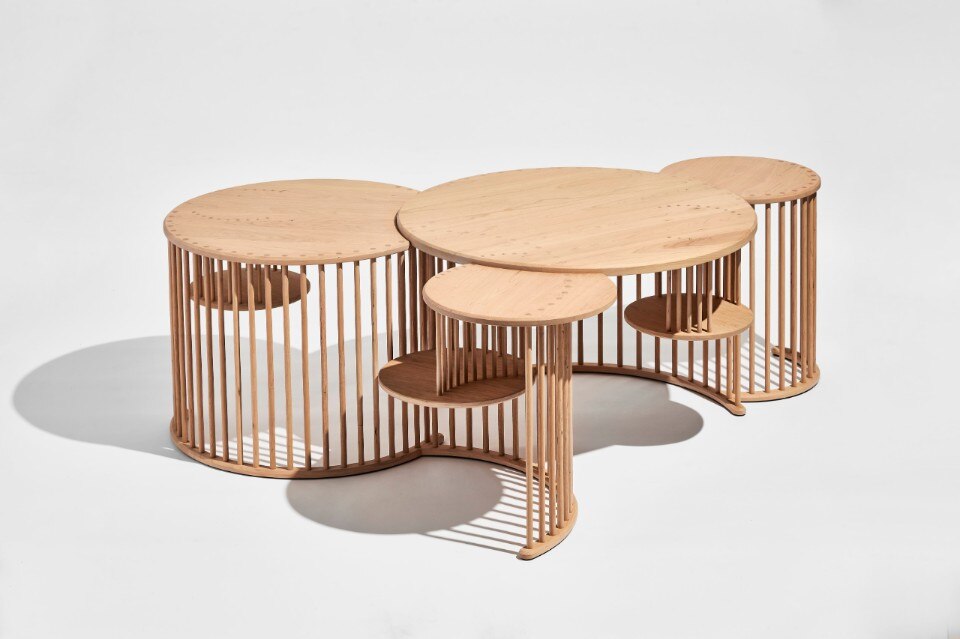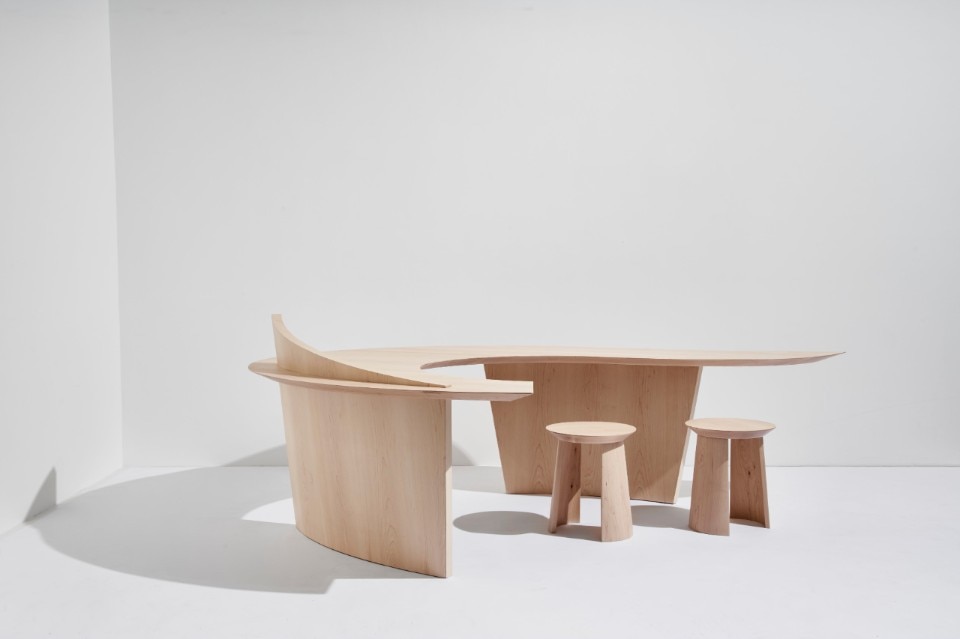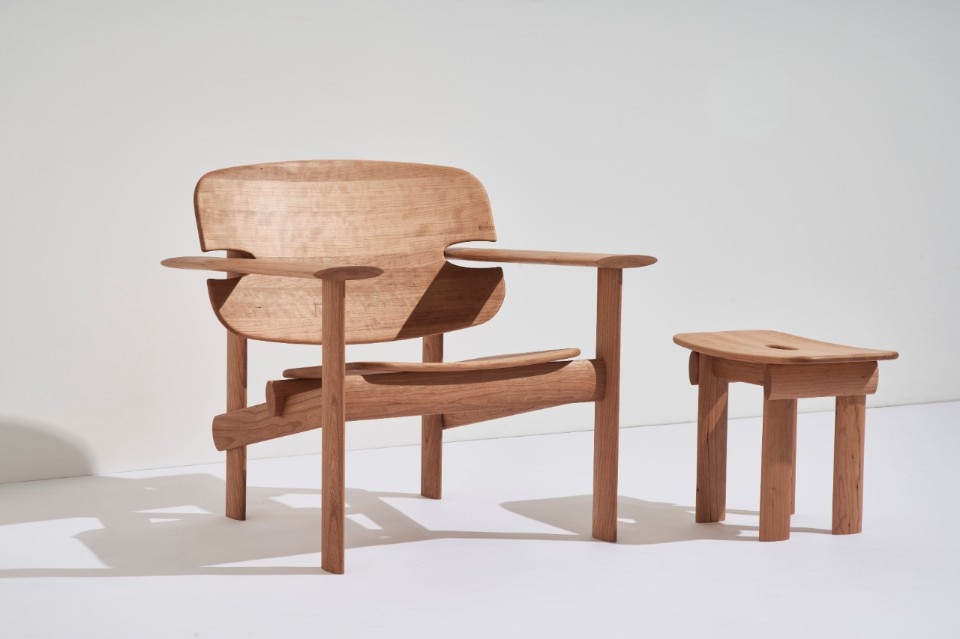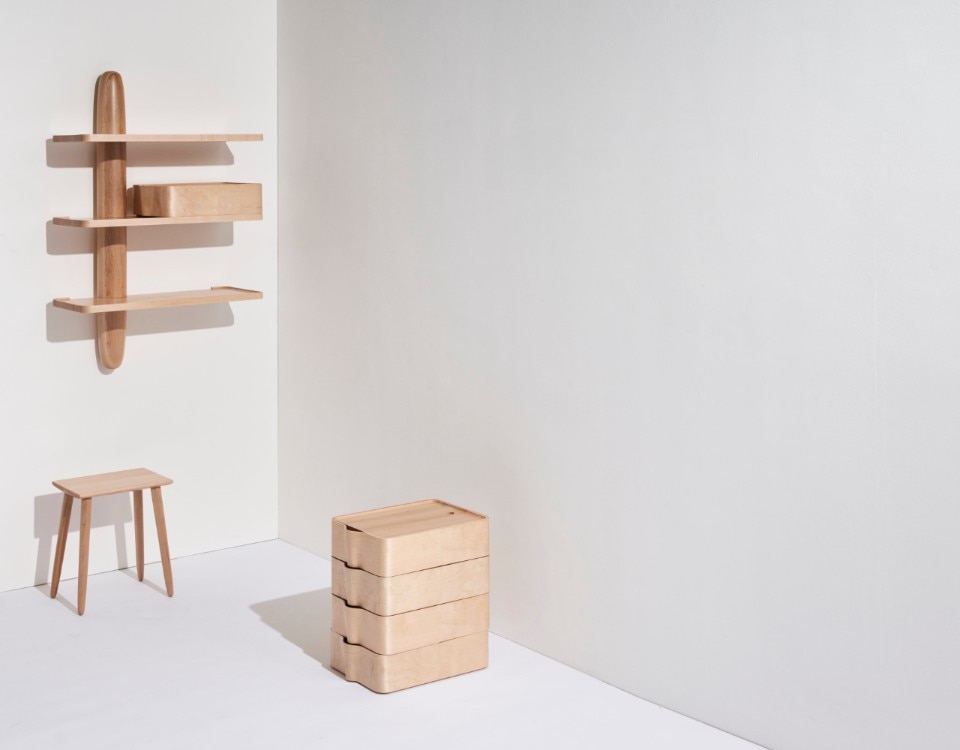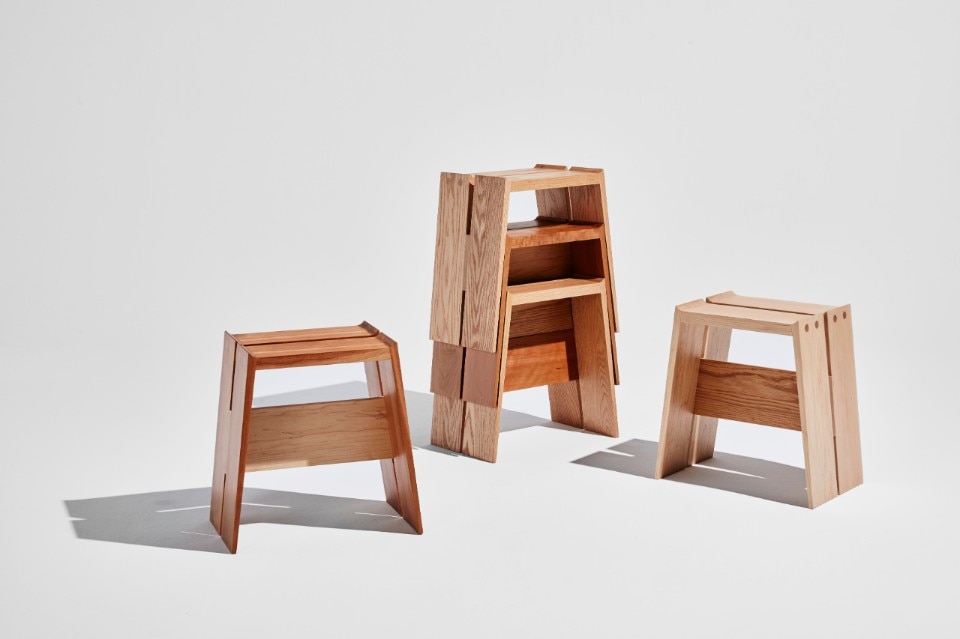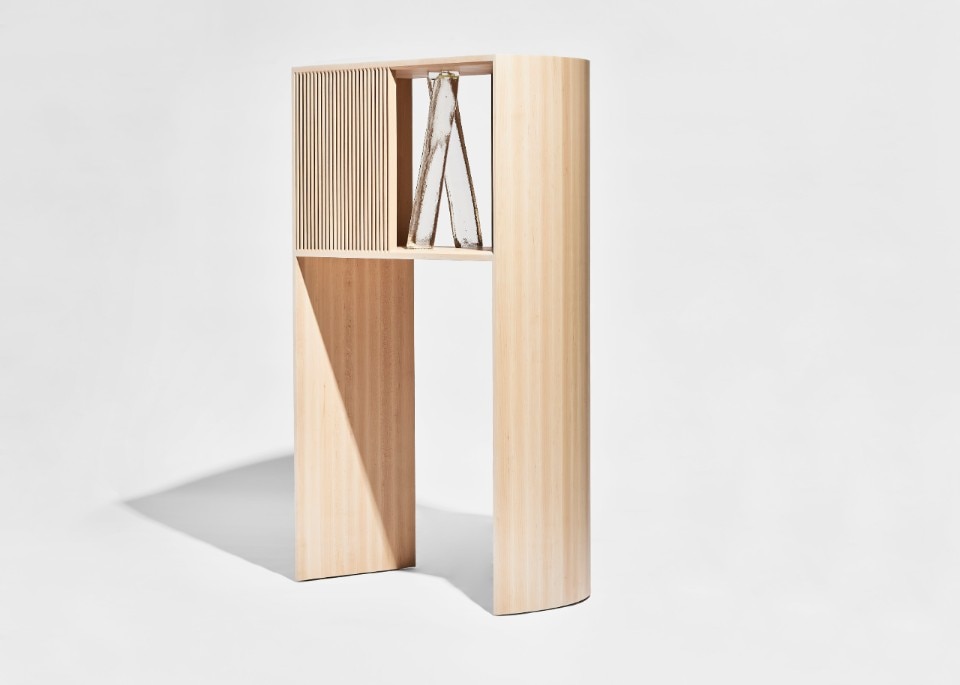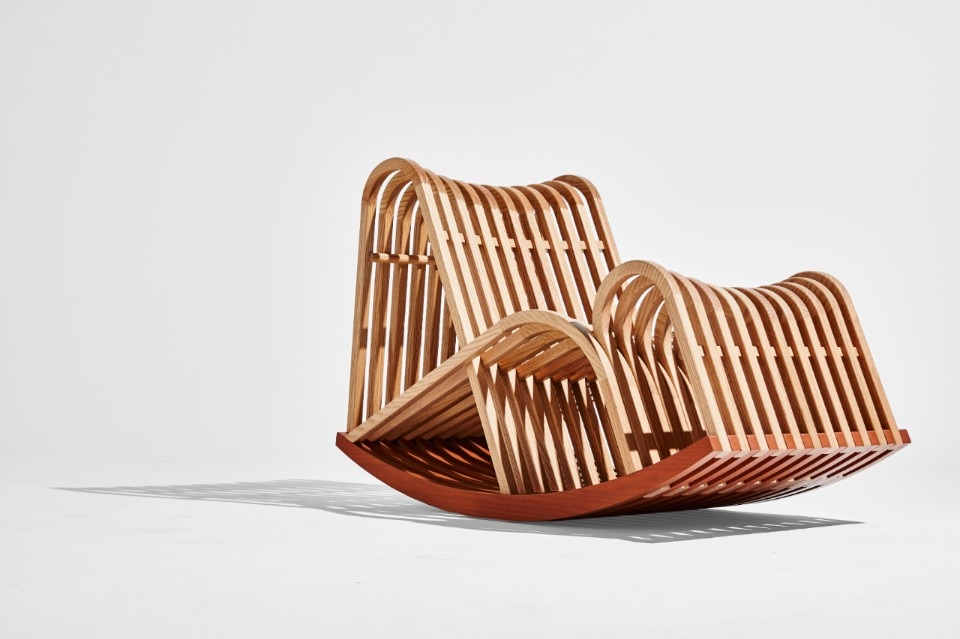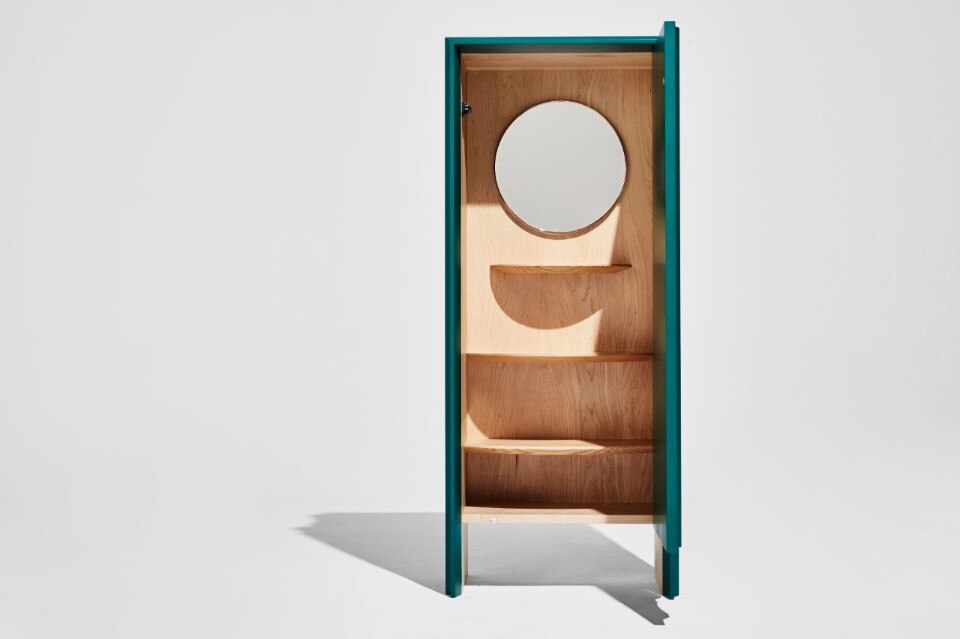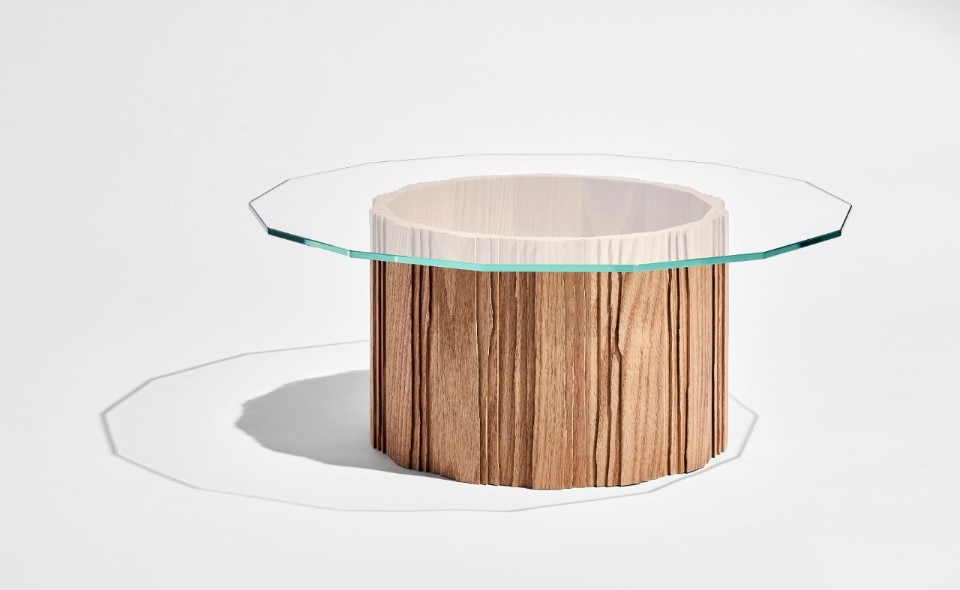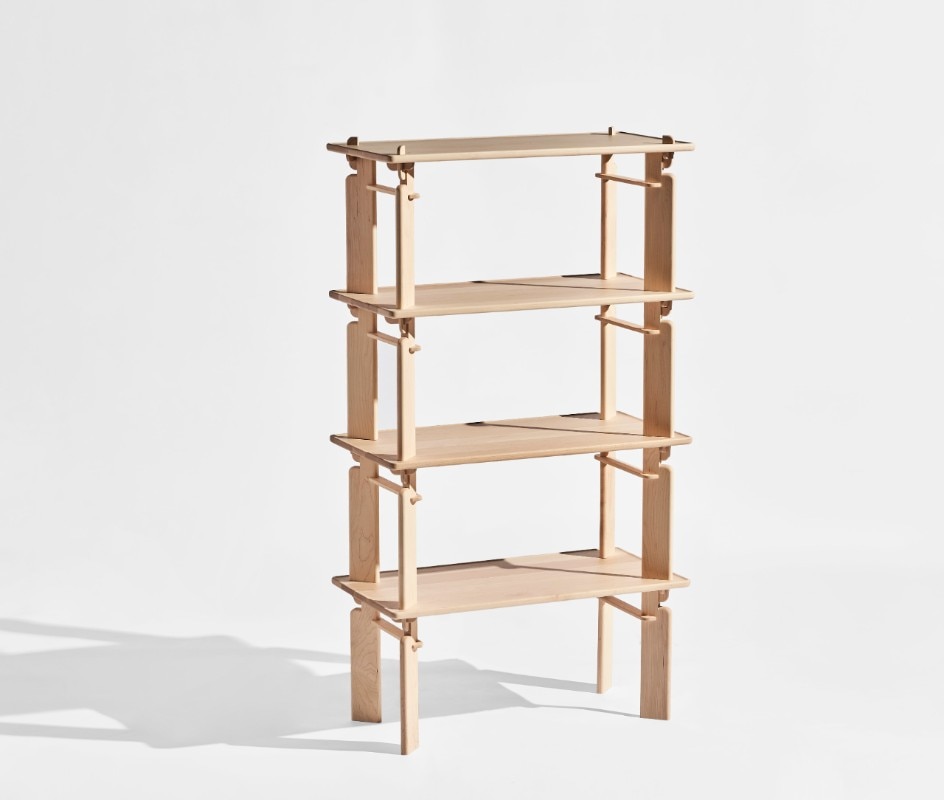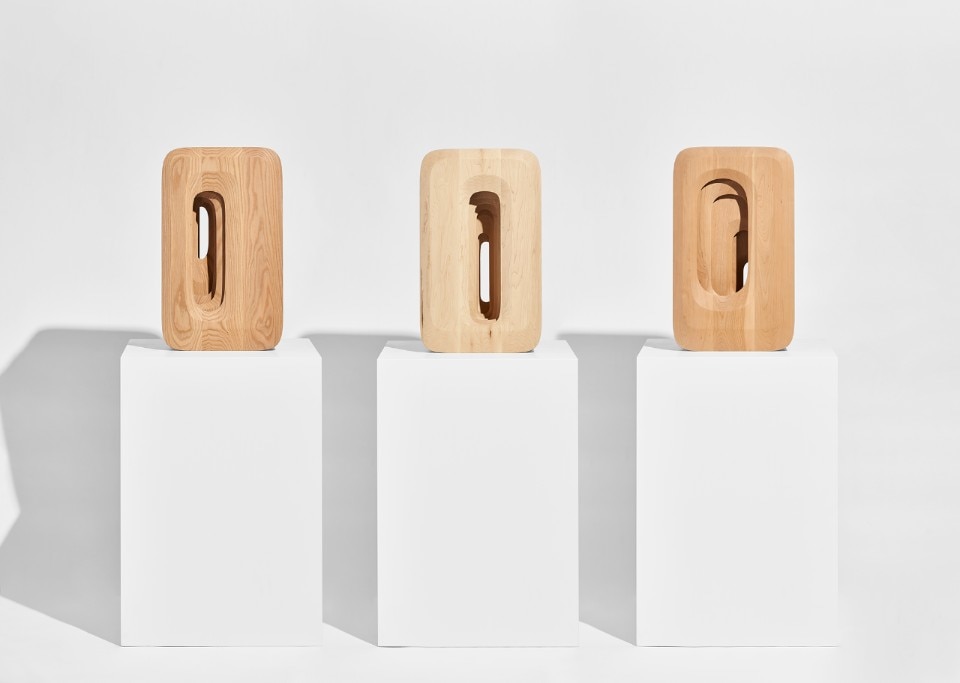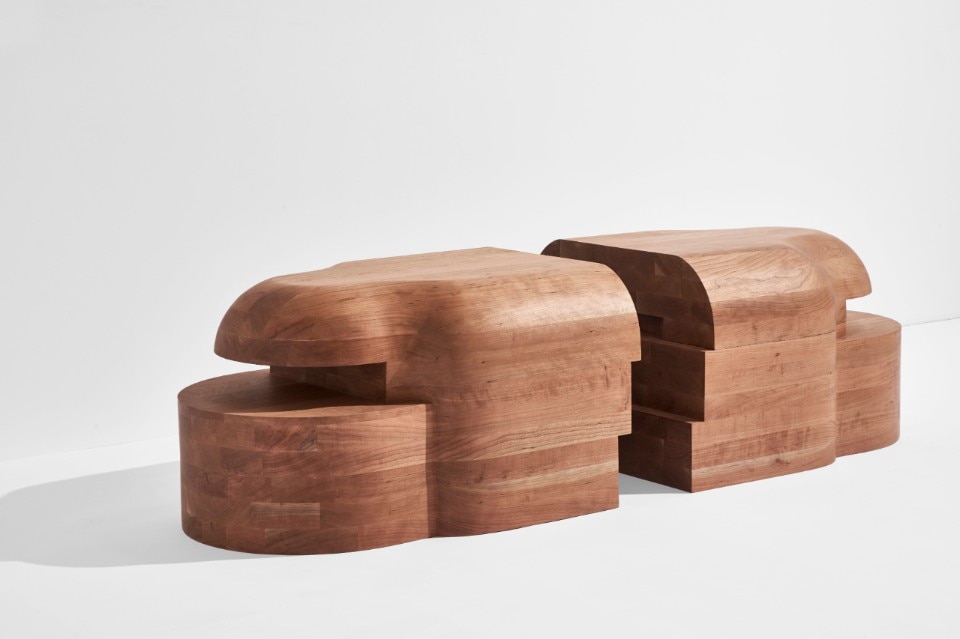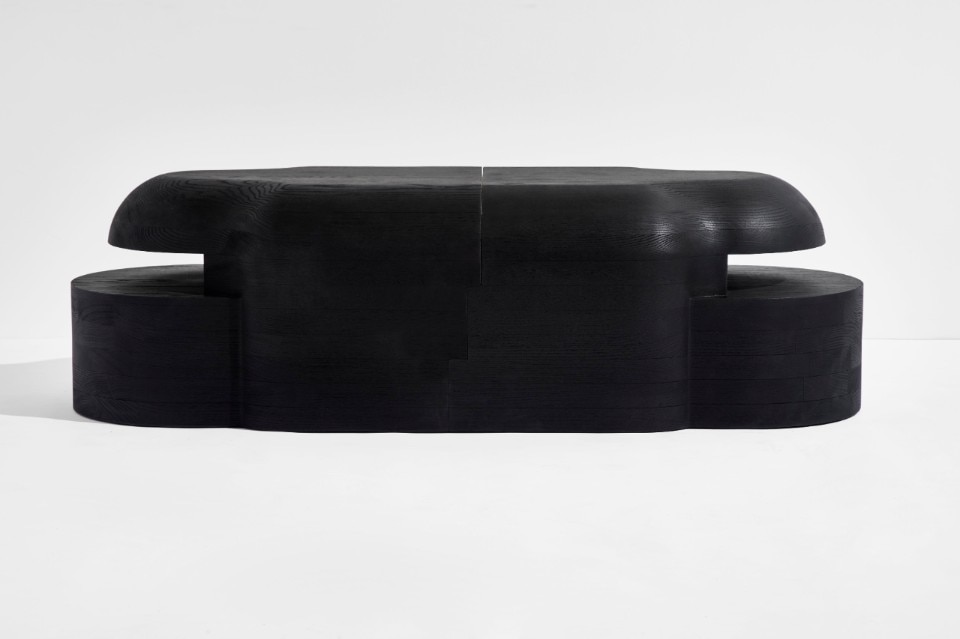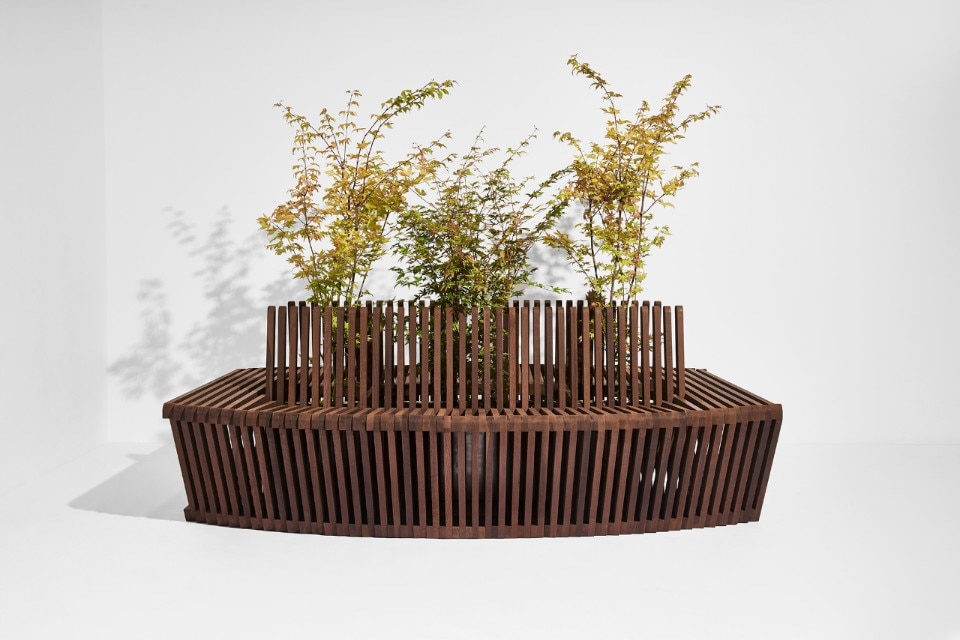“How do our objects help combat isolation in a pandemic-afflicted reality? How can we foster a sense of touch in an increasingly virtual world?”
With these questions the American Hardwood Export Council (AHEC) launched its project Discovered, a platform that challenges twenty young designers hailing from sixteen different countries to work with a carnet of North American woods: cherry, red oak, hard and soft maple.
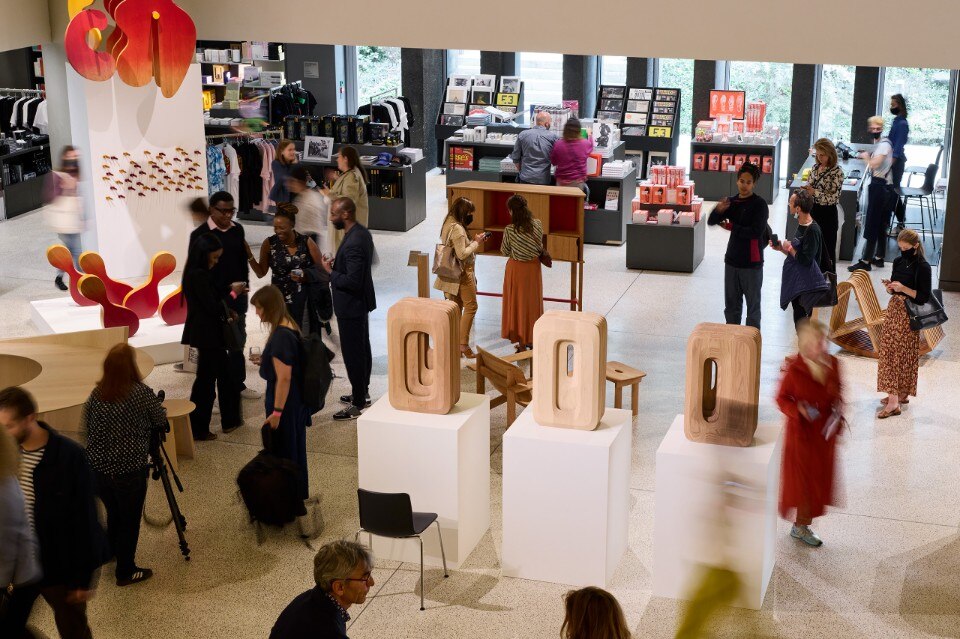
The exhibition marks the return of tactility as a tool for the reappropriation of spaces and for the projection of a future that is already present, and where the domestic dimension seems to be destined to take over both or social and working life.
The twenty different asnwers to AHEC’s questions find their embodiment in a series of objects that are now showacased at The Design Museum, London, and that range from the most pragmatic utilitarianism (the Concur armchair by Mac Collins), to the conceptual (the objects of the series Presences by Isabelle Baudraz, or Reframe, the tryptic of sculptures by Ivana Taylor). All works that, overall, pay attention to the sensorial sphere – the tactility of the material is enhanced, but also their scent – and to the necessity of giving to interior design the same fluidity that dominates the public discourse and that has now become a constant factor of our lives.
In such regards, it’s worthy of praise the Toteemi storage system by Finnish designer Josh Krute. Modular boxes made of hard maple whose tops become, to the necessity, trays and whose base can turn into a small table or stool: a smart and playful solution to overcome the issue of domestic environments taken over by a multitude of objects and documents that simultaneously belong to one's private and public life. The Toteemi therefore becomes a salvific object for the person confined in an intimate environment. It's no wonder that its name – like its structure – nods to the concept of totem, core of public life in tribal settlements, one of the primal and most exemplar models of organised society.
.jpg.foto.rmedium.jpg)
It is indeed the cotingency of the theme of the separation of the private and public spheres of our existence the core around which revolves Studiolo 2.0 by Italian designer Alessandra Fumagalli Romario. A cabinet of curiosities inspired by the Renaissance paintings that aims to rediscover and update the versatility of furniture in the ancient European coorts, where private environemnts could suddenly turn public for mundane events when needed.
Conceived following the reflections on the – often questionable – backgrounds of the endless Zoom, Skype and Facetime calls endured during the lockdown, Fumagalli Romario’s studiolo hides or reveals our domestic intimacy according to the situtation or mood. Thanks to its theatrical and cinematic approach enhanced by the subtle red gradient adopted in some of the piece’s compartments, Studiolo 2.0 becomes a cardinal element of the totally fluid and single macro (or micro) environments that have fully become the battle field (and playground) of the everyday life of today and tomorrow.
What, no doubt, stands out as equally spiritual and playful is the Winding Stream table by Yunham Wang. Inspired by the so-called ‘winding stream party’, a Chinese practice where poetry is composed while a cup of water is poured down a stream, this design piece overcomes the impediment of taking part to public and collective rituals during the pandemic, therefore translating them into a new domestic dimension.
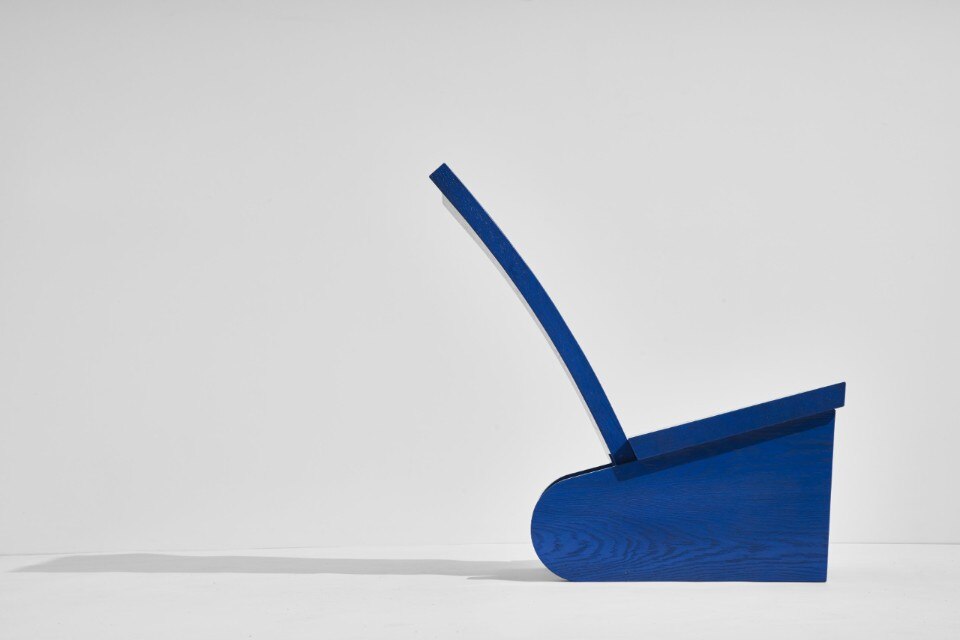
The conceptual ductility, afterall, is what truly emerges from the works exhibited at the Design Museum. Just look at the Rå chair by Swedish designer Martin Thubeck. Both seat and slide, the piece was born out of observing the way the kids of the artist readapted their toys and pieces of furniture during the prolonged homebond lockdown life. In this diffuse playfulness are, no doubt, the figures of the designers to stand out as the demiurges able to become bridges between the conceptual and the practical aspects of living.
The star-spangled pragmatism already showed in the mastodontic American pavilion at the Venice Architecture Biennale returns, highlighting once again the importance given to wood as a living and structural solution for the generations to come. The theme is, logically, harmonised with that of environmentalism – how long until the whole discoruse will start to sound like a broken record, though?!
For sure, oak, maple and cherry dispense formidable sensorial joys, however, one is often led to question to what extent their aesthetic potential is compromised if left unvarnished. Luckily, the Rå seat, the Migo 01 chair by Pascal Hien, and the Recollect cabinet – designed by Tan Wei Xiang using hard maple and red oak, and concevied to host our most trasured possession as a way to stay, albeit only sentimentally, in touch with our dears despite the forced separation imposed by the pandemic – provide us with fascinating glimpses into the charm these materials can acquire when blessed by paint and let into our households.
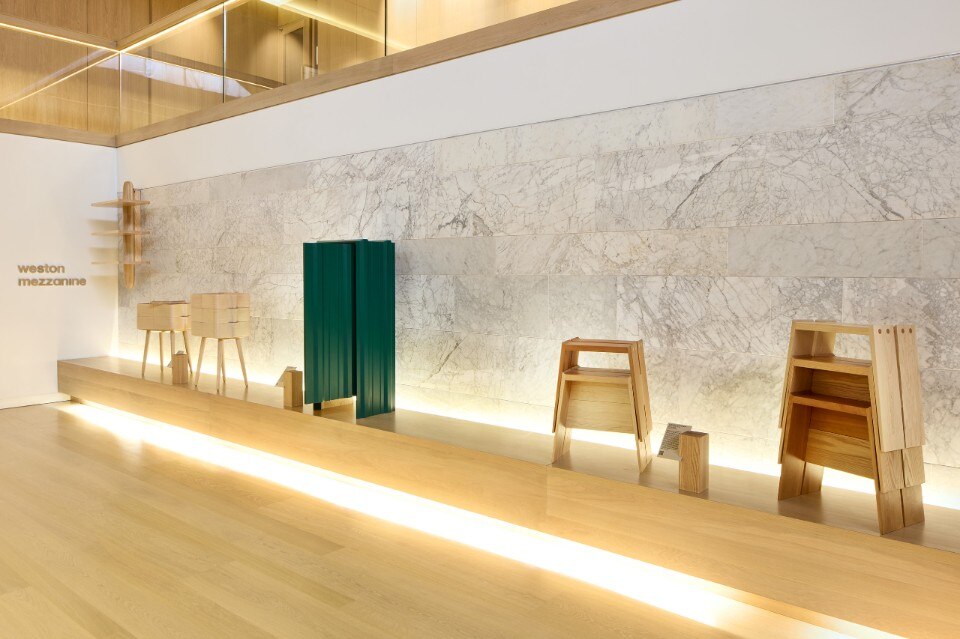
It is nonetheless enjoyable the harmony sparked from the juxtaposition of the dense and resistant materials and the sinuous lightedness of the shapes, as highlighted by English designer Mimi Shodeinde’s Howard Desk, and by the monolithic Lahmu by Sizar Alexis. Conceived as a modular sculpture that, when needed, can turn into a bedside table, a stool or a bench, the piece is the outcome of the artist’s considerations on the protection offered by bunkers and matured while growing up during the Iraq war in the 1980s.
For sure, the raw materials offered by AHEC find their ideal stage in the interiors of the Design Museum that, like noted by a colleague, resemble those of an Apple Store – “which is not the greatest of things,” she points out –, more than those of the modernist building, once home to the Commonwealth Institute, that since 2016 has been hosting the London institution.
In a London that seems to have moved on from the pandemic – this preview of the London Design Festival is a testing site for both socialites and the first visitors –, with the plan for a Covid passport scarpped by Westminster, and with the use of face masks left to the arbitry of the single (you can hardly spot any in the whole of the event’s showcase) shouldn’t we, therefore, question the degree of innovation of the project proposed by AHEC.
Without doubt our social and working dynamics have morphed, and with them design has too, but is it really worthy to keep rummaging on these themes instead of starting to finally think of a future not affected by the pandemic? Isn’t this whole reflection, perhaps, slightly out of time?
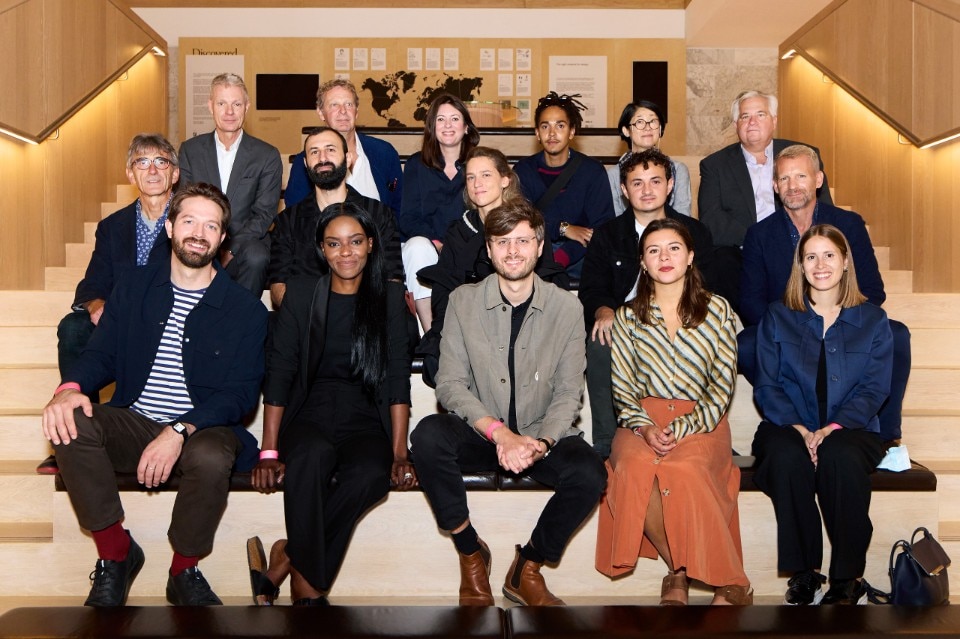
Opening image: The Migo 01 chair by Pascal Hien. Photo: Jason Yates


